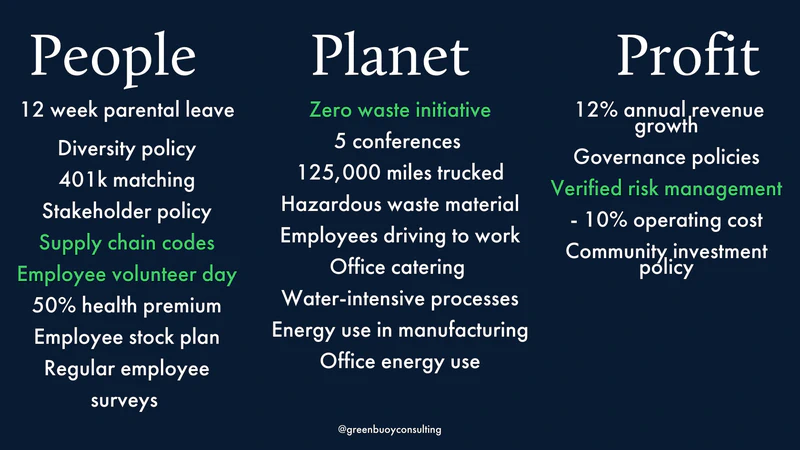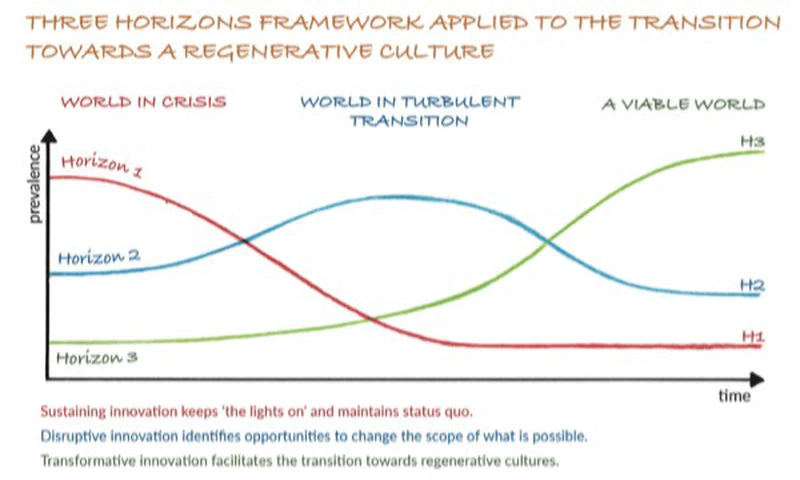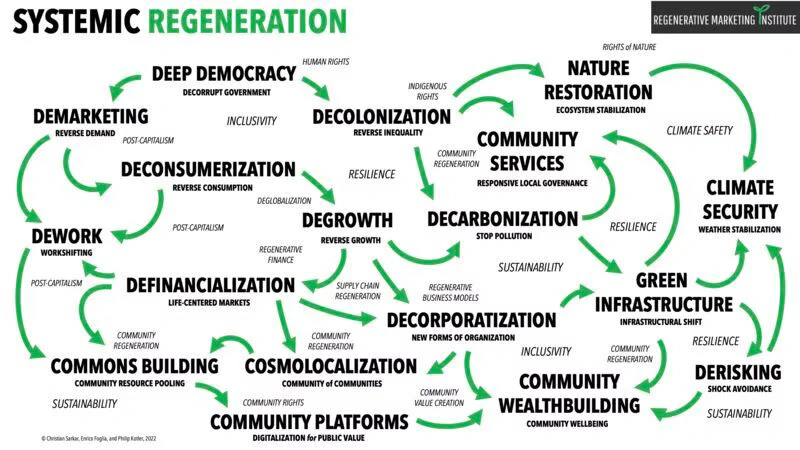Do I know what tomorrow’s product looks like? No, by definition it’s tomorrow’s product, I don’t know today what it looks like. But then can we rely on recent years to imagine some directions? Maybe, I’ll come back to that below.
What would I like to tell you about tomorrow’s product?
First, some good news in this growing anxiety:
On one hand, we are very well equipped to design tomorrow’s products. Imagining a product, and therefore a viable, sustainable world, even a restorative era, will call upon skills in complex thinking, in systemics, an understanding of emergence mechanisms, work on changing culture and mindset. And for all that we are very well equipped, we, the “agilists”, the “coaches”, the “systemicians”, etc.
On the other hand, the question of eco-responsibility projects us into level 5 of tribal leadership. What does that mean? Briefly, this good book presents two useful ideas: that of triad dynamics, and that of “levels of openness to life” (I decide to call it that). Level 1 being that life is a drag, level 2 being that I am a failure, level 3 being that things succeed thanks to ME (many of us are there), level 4 being that WE are great (versus the others), and finally level 5 that life is beautiful and everyone might as well flourish in it. For me as for many, it’s often back and forth between 3 and 4. Thanks to this question of eco-responsibility, I can finally reach level 5 without flinching. If my direct competitor succeeds even better than me on the subject, good for them, it’s very good news. Every initiative, good or doomed to fail, remains good news. And it’s very pleasant.
So this product of tomorrow, which by definition is of tomorrow? 3 axes to see it happen in my eyes today.
Learn
If we look back at this question of disruption (product of tomorrow - preamble) we’ll note that technology as knowledge has proven key to overturning markets, creating disruptions (you know Marc Andreessen “Why software is eating the world”). Moreover, Marty Cagan, the current pope of product management is not mistaken and dedicates a chapter of his latest “empowered” on the key role of technology. Making products today without technological expertise is an enormous difficulty and risk. He recounts:
Often1 when I’m having a dinner with one of the CEOs from a company that doesn’t get this, they tell me how they’re not a technology company – they’re an insurance company, or a health care company, or an agricultural company. I’ll say “Let me tell you what I would do if I was a product leader at Amazon or Apple, and we’ve decided to go after your market because we believe it is large and underserved, and that technology is available that enables dramatically better solutions for your customers”. – Marty Cagan, Empowered.
Without this knowledge, no capacity for disruption. No capacity for adequate response.
For what I’m going to wrap in the generic term “eco-responsibility” it’s the same, those who don’t have knowledge, no expertise, will become completely obsolete. It is imperative to train as many people as possible to have the means to think about these products of tomorrow, to open up. For those who have this knowledge, new markets are opening up. Does this seem obvious? Good. We talk about training government ministers and we see the reluctance, the obstacles or the lack of commitment.
Having expertise in eco-responsibility means what? It means acquiring strong knowledge on the subject to have enough elements in hand to become creative, inventive. A few examples.
We can learn from the past. Alexis Nicolas was telling me, for example, that the bicycle chain had been invented some time before the steam engine. And ultimately the latter had caused such a disruption that the bicycle chain had been very under-exploited. Now the principle of the (bicycle) chain is very eco-responsible. That of the steam engine less so… Let’s dig into our past with a fresh look.
We can learn from others. All our tomorrow’s questions are very centered on our Western navels. Because ultimately if we all switched to today’s uses from other parts of the world, the energy problem would disappear. The step seems enormous. We saw Fosbury jump, it seems impossible to go back concerning our ways of living (except under constraint, but that’s actually how I measure myself: by the level of constraint I impose on myself). But what could we learn from these other places?
We can learn technological frugality: what emits carbon? What reduces our carbon footprint? How to propagate frugality dynamics to others?
Clearly distinguish the difference between emission reduction, and emission compensation. Today, it’s not enough to stop, we’re going to have to repair.
We can learn to work on intermediate zones, on the legislative: how to resell our carbon credits to make other choices (Tesla for example does this and this is a fundamental source of its balance sheet)? Mission-driven companies will be supported by a PACTE law that will engage companies to use their services, become one? How will the imposition of triple accounting (financial, nature/environment, social) change the game? We need to know all this to move forward in this new disruption that compels us.
We can learn to have a good understanding around the notion of systemics, which allows us to see the whole, to understand that local optimizations often prove false, that interactions are more important than the actors of the system themselves. That everything is linked: stopping a nuclear power plant here triggers coal use there for example.
So I’m starting with something obvious, but you have to learn to give yourself the means to continue having good product ideas. Knowledge, expertise in the world of eco-responsibility is like today a knowledge, technological expertise; without that, few horizons open up.
Benchmark
After knowledge, data, what’s really happening? Here too, the “connoisseurs” of good or beautiful products know. Without data we’re a bit blind, we don’t know where to advance. For tomorrow’s products it’s the same, it seems important to me first to benchmark, not really to know, but to raise awareness, to be able to articulate a conversation.
Our real work is that of awareness-raising. Tomorrow’s product like today’s will shape our world. To think about it differently, we must change our posture, our gaze, our perspectives. To think differently about our products, we must know, and we must turn, take new perspectives.
I don’t agree with the positions of some who want to nitpick initiatives that are more symbolic than effective. I believe in intention and attitude, symbols are the necessary first steps before they transform into reality.
Triple accounting
What I propose to start benchmarking are two tools: the first is triple accounting (“triple bottom line”). This is something very serious that will happen sooner or later officially at the European level for companies. It’s about consolidating our budgets not only financially, but also socially and ecologically (vis-à-vis nature). No matter if you do it by the book, the important thing is to start measuring not only financially, but socially and ecologically.
An example from a consulting firm picked up on the internet: once again, just do the exercise on your products to consolidate their financial, societal and ecological aspects. This will point to strengths or weaknesses that will begin to orient your mind towards tomorrow’s products.

Three horizons
Another way to benchmark would be to categorize your products along 3 axes, 3 horizons. This idea comes from an article by Daniel Wahl. He highlights 3 horizons:
- the first path is the product as usual, but it loses its meaning in the world we’re entering.
- the second is the intermediate path that demonstrates first steps or first successes towards these new generation, eco-responsible products.
- the third is the path of sustainable, frugal, even regenerative products, repairing our damage.

What’s important in this diagram is to understand that we’ll have to go through the intermediate path in the vast majority of cases. The big leap is not possible. There are steps. This is what I criticize in those who nitpick initiatives that are sometimes more symbolic than effective, it’s underestimating the necessary mental journey, the necessary process.
Benchmark? Categorize your products according to these 3 horizons. Are they all in the first? Do you have any in the second category? I proposed doing this benchmarking in my environment (it will be done soon). I imagine that we’ll have very very few already in category two, that of first steps, first advances, that they’ll almost all be in category one of “business as usual”. It doesn’t matter, the objective here is to realize it to start orienting ourselves differently.
With this information we enter the concrete, we can articulate a conversation, choices, actions. Benchmarking is seeing where we are and therefore being able to move forward.
Make emerge
Like the disruption questions mentioned previously, it would be advisable for everyone to launch into laboratories, experiments, alternative channels. Products have been dominated by people who thought differently, and by people who had technological knowledge in their hands. The sequel, if we take these arguments, will be led by people who enrich their expertise, their knowledge on eco-responsibility topics, and who will have triggered emergent alternative approaches. Obvious? Are you doing it?
I advise all companies in France and beyond, to conduct an audit of their product portfolio, to know how to eliminate the least useful, least performing 20%. And to redirect this budget to initiatives whose objective would be to make these new products emerge. I am at your disposal for this.
What would these emergences look like. Again by definition I can’t tell you. I can just remind you that you shouldn’t rush to the first emergences (as the Cynefin model, by Dave Snowden reminds us). Give yourself time. We’re no longer in the permanent bounce of the constantly evolving product so conducive to today’s consumer society.
As a starting point, it can be interesting to look at an approach based on mimicry of nature to evolve some of our products, or imagine others. I found Michaela Emch particularly interesting on the subject. Here too we find precepts that we use a lot in our so-called “agile” worlds. A fascinating pointer: asknature.org. You go to “search” and for example you type: “friendship”. And you’ll find for example that flamingos form groups of four to accompany the journey of the youngest, and that this group persists beyond “onboarding”. Isn’t that fascinating for our products2?

You have to dive out of your comfort zone to make new things emerge. Asknature, ok. But we can also take this diagram from the Regenerative Marketing Institute and imagine lots of things.

Decorporatization: that’s my future company, my future product! Isn’t this an extension of the de-scaling that we regularly discuss, through agility, sociocracy, etc. A fascinating way to make companies more sustainable? Definancialization: a way to approach beyond budgeting. You have to grab the future by one end and see what emerges. (Some directions for thinking outside your comfort zone: workshop ALE 2022, my last three articles are very linked to each other).
Learn, become expert, benchmark, measure to articulate your action, think differently, make emerge. Your turn to play. The world we live in is that of our products, the uses we imagine, let’s take care of them.
-
Often when I’m having a dinner with one of the CEOs from a company that doesn’t get this, they tell me how hey’re not technology company – they’re an insurance company, or a health care company, or an agricultural company. I’ll say “Let me tell you what I would do if I as a product leader at Amazon or Apple, and we’ve decided to go after your market because we believe it is large and underserved, and that technology is avaiblable that enables dramatically better solutions for your customers”. – Marty Cagan, Empowered ↩︎
-
I had previously in unfinished work heavily used termites… ↩︎